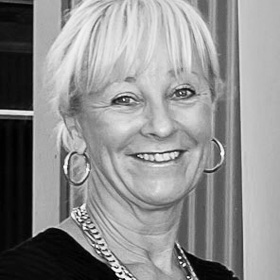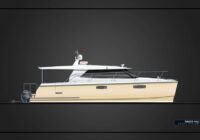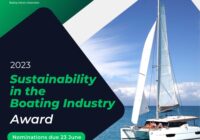International views from GMBA
From the team at GMBA
The recent GMBA Annual General Meeting, held at the picturesque Langrish House in the UK, provided them with an invaluable opportunity to shape their medium- to long-term strategic vision. Being together for a few days, with minimum distractions, gave rise to in-depth discussions about the state of the industry and the key challenges it faces. Thier aim was to remain at the forefront of the industry, consistently delivering the world-class service that their customers have come to rely on. And being in touch with the marketplace is key.

Supply Chain Challenges
A key issue at the GMBA meeting was the current situation regarding supply chains. It was generally felt price rises now were due to inflation as opposed to pandemic issues and these price increases appeared to be stabilising. During the pandemic period, some new suppliers emerged and as a consequence of the covid period a number of suppliers had folded. There was some robust discussion around the lack of delivery from engine manufacturers. It appeared that there were varying experiences of service delivery from the same engine manufacturer. It is imagined that the value of the customer and existing relationships would have come into play.
Poland is currently the second largest manufacturer of recreational boats after the USA and this was a point of discussion. There is a shortage of skilled staff in most boatbuilding countries and the Ukraine war has had a heavy impact. It is estimated that 20% of the boatbuilding workforce in Poland is from Ukraine and returned home at the start of the conflict. They have not yet returned putting strain on the Polish market and there manufacturing capabilities. It appears in some regions where the cost of staff is relatively cheaper, the production process simply throws people at issues whereas in reality more production efficiencies are required. This can in fact end up creating higher costs. Production efficiencies need to be maximised and some companies are now considering moving their production to more labour and technology-efficient countries.
General Small Craft Market
Boat prices have increased by 20-30% based on supply chain increases but this has now become opportunistic. There is widespread sentiment that the excessive increase in prices will impact the market, which has seen a big increase in first-time boat owners. In considering new entrants to the market, it was suggested around 12% will sell within 2 years. That figure has already gone up to 16%. Boating had a boom time during Covid but with the ability to travel, increased work pressures and competing leisure activities, the market will contract. It should also be noted not only the costs of the vessel that have increased but in many parts of Europe, the cost of shore power has increased dramatically.
Boat sharing and boat clubs have increased in popularity. Inflatable manufacturers are stating a big percentage of their sales is for the rental market. It is a cost-effective and easy way to enjoy the boating lifestyle without the initial costs and heavy investment.
Sustainability
This is another area that is very topical right now. Propulsion and the race for alternative fuels have become a very political issue, with pressure on the industry to innovate. There has been a big focus on electrical engines, but other options need to be investigated properly. There have been 16 cases of super yacht total fires from batteries, highlighting the importance of safety above all else.
It was the opinion of the group that the time frame for new SUSTAINABLE fuels, with the accompanying quayside infrastructure, is 10 – 20 years away. It has become clear that there is not one alternative fuel solution, but several. The use of hydrogen is manifesting in 3 different ways. Fossil fuels are not going to disappear overnight but are likely to be around for many years. The industry needs to reduce its dependency on fossil fuels and reduce overall consumption. For smaller vessels, the ability to use existing engines with some adaptation to accommodate alternative fuels would be the ideal scenario, taking into consideration the sheer volume of outboards globally. Marinas and boat yards will need to be equipped to offer a number of alternative fuel options. It is a delicate balance as presently there are limits to the amount of non-fossil fuels and their availability. Is there enough to meet the yachting and shipping industries’ demands in the next 10 years and if not, how are we working with other sectors to accelerate the production and availability thereof?
When looking at sustainability, design plays a key role. The efficiency of hull design needs to be considered. Other design aspects such as insulation can play a role in minimising energy consumption, which on most super yachts is due to the hospitality load. The super yacht sector is very proactive in driving innovation and development, with spin-offs for the other boating sectors.
Relevance of Boat Shows
Discussions took place regarding the attendance and relevance of trade shows. It is felt by all that they remain as relevant as ever but costs remain a concern for GMBA clients.
Boat shows are now at about 85% of what they were prior to Covid. There has been a streamlining of shows, with fewer shows in each country. The Cannes Yachting Festival is perceived as a great show, with a diverse offering in terms of vessels and subsectors represented. For the event, many companies bring their dealers from all over Europe. It is a professional show that delivers on what the exhibitor needs. BOOT Dusseldorf is also popular and a quality show. GMBA clients were very positive about Dusseldorf and felt it was well organised and drew the right crowds/ buyers. Some who had decided not to exhibit were regretting the decision.
There continues to be resistance from exhibitors about the high costs of exhibiting at shows. A boat show can have value but perceived high costs put people off. Private events hosted at boat shows are increasing in popularity. These events add value to the shows and they appear to allow competing brands to also take advantage of the VIP guests who attend. In addition, larger firms and dealerships are spending more resources hosting private events for their clients and prospective buyers at marinas and at their own premises. These events are continually innovating and becoming more widespread. These brand events appear to be increasing as a recognised method of sales.
In the USA boat shows are back but the numbers are not where they were. The Miami International Boat Show was a light show this year and there is a feeling that The Palm Beach International Boat Show might be taking some of the traffic and exhibitors from the Miami show. The Miami show has become 50% more expensive and that is a big leap for exhibitors.
For B2B trade shows METS continues to be the industry leader. Country pavilions remain important for smaller firms as the pavilion host, usually an MIA, is able to negotiate a better m2 rate and the pavilions are generally in high-traffic, visible areas. The MIA also provides organisational support and networking opportunities for the exhibitors.
Shows continue to be very important for a company’s reputation and brand. The boat shows that adapt to the market and trends will continue to attract the exhibitor and visitors numbers.
Marine Industry Recruitment
With the growing labour shortage, online platforms for job seekers and businesses offering employment opportunities appear to be growing. In Australia and NZ their MIA’s have online job platforms for members which are growing in size and importance. Marine Resources UK appears to be filling a much-needed void in the UK and the European job market. It will be important for these platforms to keep developing the technology and usability of their platforms and continue marketing these services to their members and importantly to job seekers. Countries like Australia are reviewing visa requirements to make it easier for businesses to attract qualified trade workers.
Industry Media
At the GMBA meeting discussion took place in regard to the significant amounts of digital media available. IBI has been in the market for a long time and continues to be very relevant and well-read globally although there is a cost for their premier service. It was noted MIN appears to have developed a good readership profile, is free but tends currently to be perceived as a UK news feed, although they do cover a lot of global news. Most countries also have their own digital news feeds offering a platform for local companies to gain a profile. Many clients ask GMBA where to place their marketing dollars. There is no one answer to this and it is all about the specific market they are targeting, what they are trying to achieve and promote. There is no one answer that fits all.
GMBA researches all mediums and relationships prior to developing strategies.
Li-Ion Battery Storage Guidelines
The UK Maritime and Coastguard Agency has released guidelines for the storage of small electric-powered craft on yachts. There has recently been an increase in the number of fires on yachts, with industry groups estimating 16 total losses due to fires between August 2021 and August 2022. The main cause is thermal runaway which occurs when the heat generated within a battery exceeds the amount of heat that is dissipated to its surroundings. With the increase in onboard toys, from jet skis to electric foils, to electric SUPs, industry guidelines and regulations are crucial.
For more information visit www.gov.uk
Harnessing tidal energy is a key part of the renewal energy landscape
Offshore tides offer a unique advantage as they peak four times a day, regardless of the weather. This makes them a reliable, predictable, and sustainable energy source. Tidal Technologies Limited (TTL), formed in early 2021, understands this opportunity. They shared their TT2, a radically different yet simple design, with the GMBA team during our recent meetings/ AGM.
Most tidal turbine developers have focused on horizontal axis turbines (HATs) in areas with the strongest tidal flows, typically around 5 knots or higher. HATs are like submerged horizontal axis wind turbines, and while some progress has been made, the costs of developing, deploying, and maintaining this technology remain very high. Moreover, HATs are only efficient in the strongest tides. The TT2 is less complex, less costly, and capable of working in areas with medium-energy tidal flows averaging around 3 knots. These areas, with depths typically between 25m and 35m, have been largely ignored by existing developers who focused on the strongest tidal flows. If tidal energy is to reach the scale of wind and solar power, these are the areas that matter.
TT2 features vertical axis drive shafts above the water, driven by submerged vertical foils. These turbines, known as vertical axis turbines (VATs), have undergone successful testing of a 1/20th scale model at the Royal Navy’s testing facilities in Gosport, Hampshire. They have minimal impact on the seabed, negligible risks to sea life and are comparable navigational hazards to offshore wind turbines.
A combination of alternative energy sources is needed to meet global demand and the development of tidal energy generation is a much needed part of the puzzle.

Those wishing to contact GMBA in Australia can do so through MaryAnne Edwards or call +61 412 916 036
Global Marine Business Advisors and its associated website www.gmba.blue are not registered legal entities. GMBA is a network of independent marine industry advisors.
To keep up to date with all marine industry news visit www.marinebusinessnews.com.au









